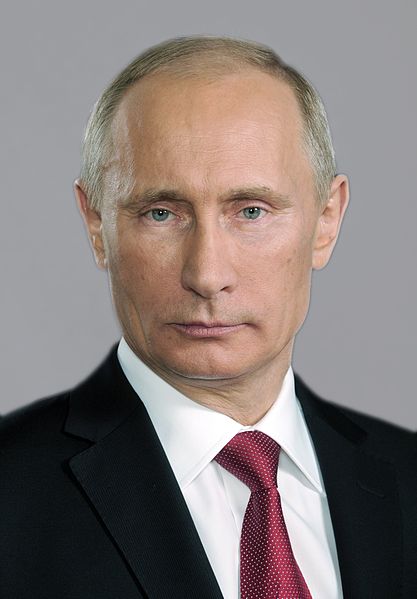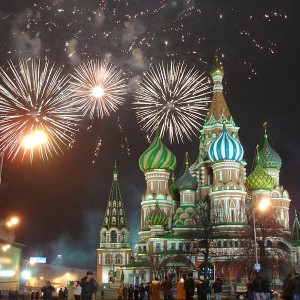 The 8th largest economy on the entire planet is in a state of turmoil right now. The shocking collapse of the price of oil has hit a lot of countries really hard, but very few nations are as dependent on energy production as Russia is. Sales of oil and natural gas account for approximately two-thirds of all Russian exports and approximately 50 percent of all government revenue. So it should be no surprise that the fact that the price of oil has declined by almost 50 percent since June is absolutely catastrophic for the Russian economy. And when you throw in international sanctions, wild money printing by the Central Bank of Russia and unprecedented capital flight, you get the ingredients for an almost perfect storm. But those of us living in the western world should not be too smug about what is happening in Russia, because the nightmare that is unfolding over there is just a preview of the economic chaos that will soon envelop the whole world.
The 8th largest economy on the entire planet is in a state of turmoil right now. The shocking collapse of the price of oil has hit a lot of countries really hard, but very few nations are as dependent on energy production as Russia is. Sales of oil and natural gas account for approximately two-thirds of all Russian exports and approximately 50 percent of all government revenue. So it should be no surprise that the fact that the price of oil has declined by almost 50 percent since June is absolutely catastrophic for the Russian economy. And when you throw in international sanctions, wild money printing by the Central Bank of Russia and unprecedented capital flight, you get the ingredients for an almost perfect storm. But those of us living in the western world should not be too smug about what is happening in Russia, because the nightmare that is unfolding over there is just a preview of the economic chaos that will soon envelop the whole world.
So far this year, the Russian ruble has fallen nearly 50 percent against the U.S. dollar. That is a monumental shift. And as the collapse of the ruble has accelerated in recent days, we are seeing scenes in Russia that are reminiscent of the Weimar Republic. For example, just consider the following excerpt from an article that just appeared in the New York Times…
Scenes that Russians hoped had receded into the past reappeared on the streets: Currency exchange signs blinked ever-changing digits, and Russians rushed to appliance stores to buy washing machines or televisions to unload rubles.
“We are seeing an economic crisis,” Natalia V. Akindinova, a professor at the Higher School of Economics, said in a telephone interview. “We are seeing a sharp devaluation of the ruble at a time when the central bank doesn’t have the reserves to influence the market, as it did in the past crises.”
In a desperate attempt to stop the bleeding, the Central Bank of Russia made an astounding move. Last night it raised its key interest rate from 10.5 percent all the way up to 17 percent.
It was hoped that this desperate move would keep the ruble from plummeting any further.
And it did work for a few minutes, but then the collapse of the ruble resumed. This is how Zero Hedge described the carnage…
For those wondering if the CBR’s intervention in the Russian FX market with its shocking emergency rate hike to 17% overnight calmed things, the answer is yes… for about two minutes. The USDRUB indeed tumbled nearly 10% to 59 and then promptly blew right back out, the Ruble crashing in panic selling and seemingly without any CBR market interventions, and at last check was freefalling through 72 74, and sending the Russian stock market plummeting by over 15%.
So why is this happening now?
Well, the biggest reason for the freefall of the ruble is the fact that the Central Bank of Russia just printed up about 625 billion rubles and gave it to their friends at Rosneft.
Rosneft is an absolutely massive oil company that is controlled by the Russian government. For months, Rosneft has been asking for a bailout (sound familiar?) to refinance loans that can no longer be rolled over with western banks because of economic sanctions.
And on Friday they got one.
In an attempt to quietly slip this massive injection of new money past everyone, Rosneft issued 625 billion rubles worth of new bonds just before the weekend and the Central Bank of Russia gobbled most of those new bonds up with freshly created money. Unfortunately for Rosneft and the Central Bank of Russia, the rest of the world took notice…
With the oil giant in a bind, the central bank ruled that it would accept Rosneft bonds held by commercial banks as collateral for loans.
Rosneft issued 625 billion rubles, about $10.9 billion at the exchange rate at the time, in new bonds on Friday. The identities of the buyers were not publicly disclosed, but analysts say that large state banks bought the issue.
When these banks deposit the bonds with the central bank in exchange for loans, Rosneft will have been financed, in effect, with an emission of rubles from the central bank.
So that is what led to the panic selling that we witnessed on Monday.
Meanwhile, money is being pulled out of Russia at an absolutely staggering pace. As confidence in the ruble and in the Russian financial system disappears, wealthy people are feverishly trying to protect their wealth by moving it somewhere else. The following is an excerpt from an editorial that Mohamed A. El-Erian recently penned for Business Insider…
Rather than bring in buyers at these substantially cheaper levels, Russian currency weakness is inducing more selling, including by a growing number of worried bank depositors who, instead of holding their savings in ruble, are opting for safer dollars. The larger the extent of this “currency substitution,” the bigger the scope for capital flight out of Russia. This puts even greater pressure on the currency, aggravating the output contraction, imported inflation, and the general sense economic and financial instability.
It has been estimated that total capital outflows for 2015 will reach an astounding $128 billion.
And this could just be the beginning of the economic troubles for Russia.
If the price of oil stays this low or goes even lower, the Russian economy will shrink. The only question is how much it will contract…
The Bank of Russia said Monday that the country could sink into a deep recession next year if oil prices remain at $60 a barrel. GDP could contract by as much as 4.7% in 2015, and then by a further 1.1% in 2016 unless oil prices pick up.
Sadly, it isn’t just oil producing nations such as Russia that are going to be devastated by the coming crisis.
Eventually, the entire globe is going to feel the pain.
Last week was the worst week for global financial markets in three years, and so many of the exact same patterns that we witnessed just prior to the great financial crisis of 2008 are happening once again. We have been living in a false bubble of relative stability for the past couple of years, but now time is running out. The next great financial crisis is rapidly approaching, and 2015 promises to be the most “interesting” year that we have seen in ages.

